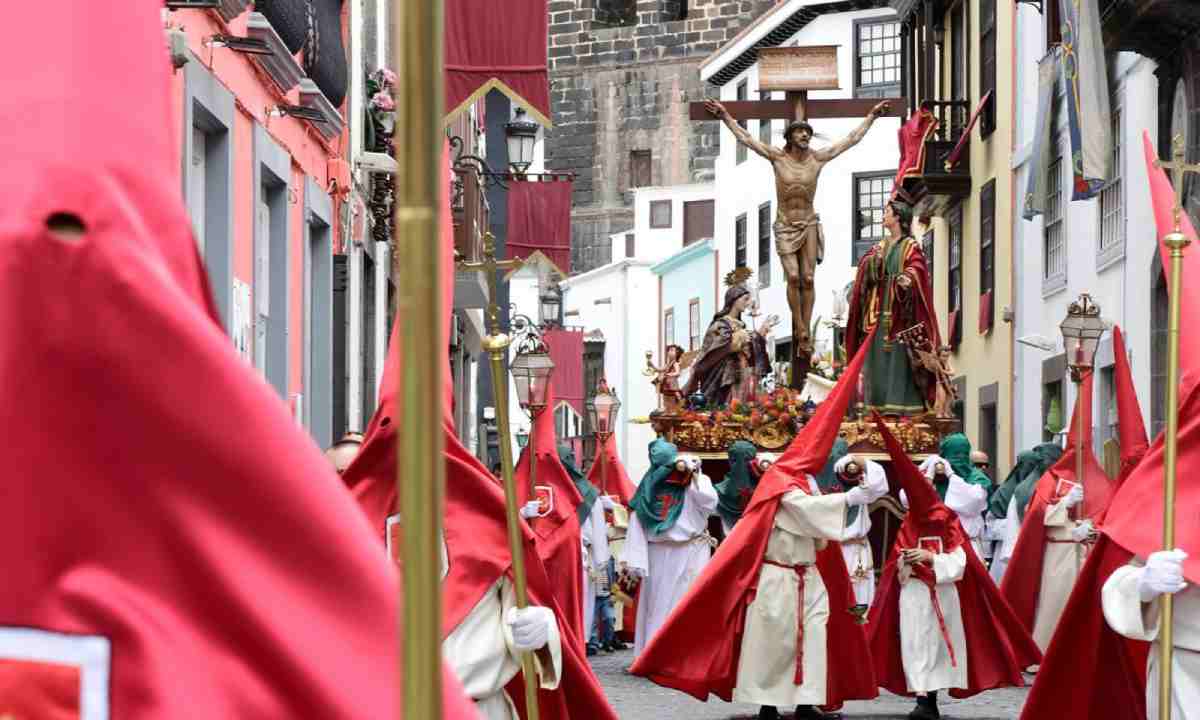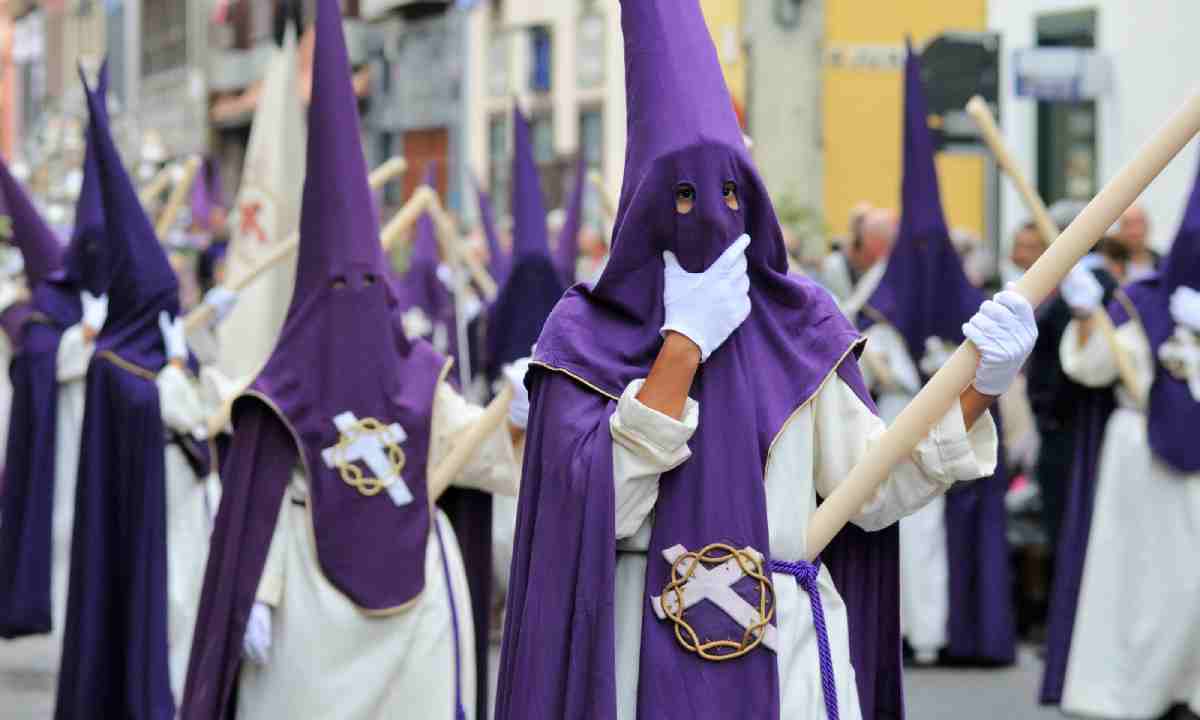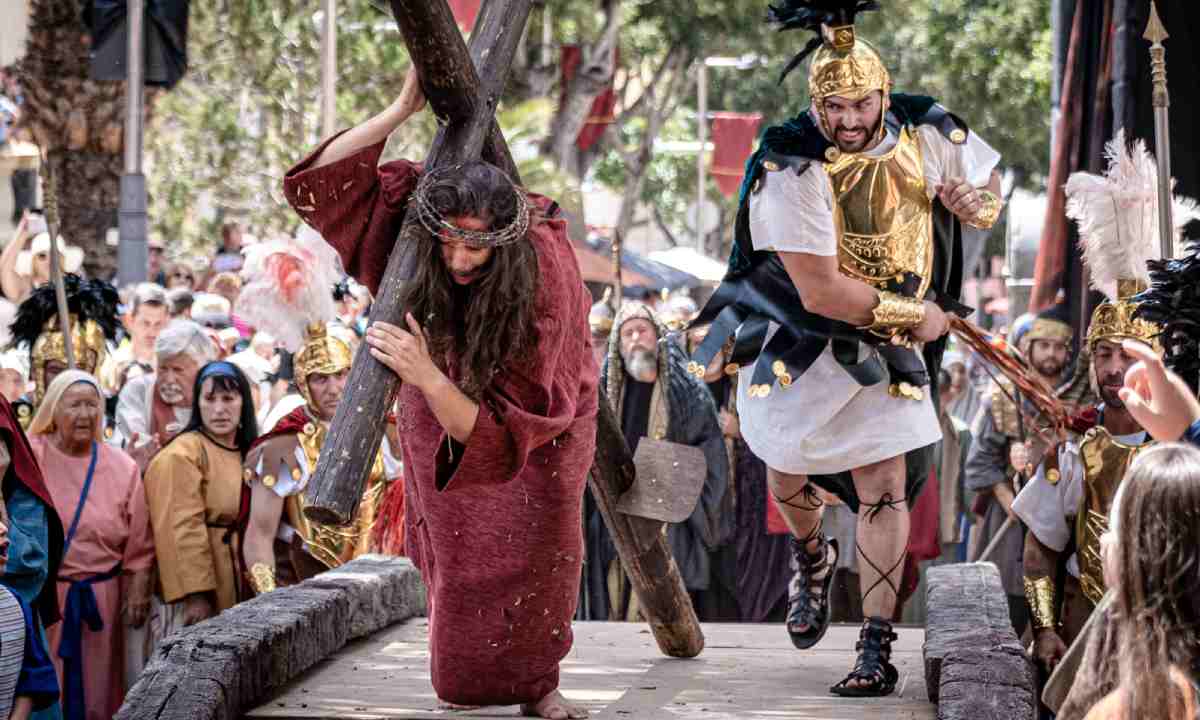Where tradition meets devotion: Easter events in the Canary Islands
Famous for their golden sand beaches, stunning volcanic landscapes and mild subtropical climate, all year round, the Canary Islands are an even more tempting destination in the Easter holidays. This sacred time of year is celebrated with passion and zeal on the islands. Traditions blend with the natural beauty of the islands and unique events, offering visitors a truly unforgettable experience.
History of the Easter traditions in the Canaries
Holy Week on the Canary Islands has a long history, dating right back to the time of the Spanish conquest. The first Spanish settlers brought their religious traditions with them, which then mixed with the local traditions.
The influence of the Catholic Church was growing on the islands from the fifteenth century. The processions were one way in which the church converted the population, spreading the Catholic faith.
The people in the Canary Islands held the first Holy Week processions in the sixteenth century. Back then, they weren’t anything like as organised as they are today; they were simple, austere processions.
The first Holy Week parade in the Canary Islands happened in La Laguna, Tenerife, in 1514. Organised by the Vera Cruz ‘cofradía’ (brotherhood), it involved a statue of Cristo de La Laguna in carved and painted wood, one of the most revered in the Canary Islands.
Beyond La Laguna, other celebrations are also known to have taken place in the sixteenth century. In the city of Santa Cruz de Tenerife, for example, in 1522, and in the city of Las Palmas de Gran Canaria in 1550.
The Semana Santa in the Canary Islands has evolved over the centuries, adapting to the local culture. The parades are now more colourful and detailed, and brotherhoods have a bigger role in planning the celebrations.
What makes Easter time so unique?
During Easter holidays in the Canary Islands, events take place in all the island’s municipalities. This tradition is now deeply rooted in society. The masses and Holy Communions are the most significant events. Celebrated in parishes and cathedrals, processions take place day and night, representing the Passion and Death of Christ.
Thanks to the Canary Island people’s openness and kindness, this is truly a community celebration. The Canarian religious brotherhoods devote a lot of time and effort to preparing the processions.
Other religious and neighbourhood groups also take on a great deal of responsibility, organising the events to make sure the images of the Virgin and Christ are adorned with the finest robes and floral displays as they travel through the streets.
You’ll find some of the biggest celebrations in San Cristóbal de La Laguna, Santa Cruz de Tenerife, La Orotava, Los Realejos and Adeje (Tenerife), Las Palmas de Gran Canaria and Telde (Gran Canaria), Santa Cruz de La Palma and Los Llanos de Aridane (La Palma) and Puerto del Rosario (Fuerteventura).
From processions to flavours
The week kicks off with Palm Sunday and ends on Easter Sunday. This period commemorates the passion, death and resurrection of Jesus Christ.
This year, Holy Week will be celebrated from Sunday 24 March to Sunday 31, 2024.
Processions
The processions are a defining feature of Holy Week in the Canary Islands, taking place on the streets of the island’s main cities and towns. The ‘hermandades’ and ‘cofradías’ (religious brotherhood) are responsible for organising and participating in the religious celebrations.
Processions are led by floats depicting religious imagery representing the scenes of the passion, death and resurrection of Jesus Christ. The floats are carried on the shoulders of ‘costaleros’; men and women in charge of carrying the load.
Church services
During Holy Week, church services in the Canary Islands tend to be particularly solemn and moving. Professional singers and musicians perform in some of them.
Services take place in churches and cathedrals across the islands.
Representation of the Passion of Christ
Image courtesy of Adeje City Council
One highlight of the Holy Week celebrations in the Canary Islands is the performance of the Passion of Christ. This outdoor play involves actors and community members reenacting different parts of Jesus Christ’s life, crucifixion, and death.
It’s generally held on Good Friday. The most famous of all is the ‘Representation of the Passion’ in Adeje. A huge 300 people act it out, and the performance brings together hundreds of locals and tourists who want to see it with their own eyes. In fact, it’s so important it’s even broadcast on TV.
You can have your chance to get close to the celebration, as our Princess hotels in Tenerife are just 10 minutes by car.
Typical Easter dishes
Easter is important in the Canary Islands and food is a big part of the celebrations.
During Holy Week, many people choose to abstain from meat as part of their religious observance. Traditional Easter Vigil dishes are really popular in the Canary Islands at this time, including ‘potaje de vigilia’ (chickpea stew) and ‘pescado salado’ (salted fish).
Other ingredients of this chickpea stew include spinach, cod, onion, garlic and more. A tasty and nutritious dish that’s easy to knock up at home.
Tips for travellers
If you’re planning to spend your Easter holidays in the Canary Islands, we recommend booking your accommodation in advance; it’s a very popular time to visit the islands. Our Princess hotels in La Palma, Gran Canaria, Tenerife and Fuerteventura are all fantastic options.
Wondering what to pack? It’s always a good idea to check the forecast. In March, average daytime temperatures in the Canary Islands hover between 20° C and 24° C, getting cooler at night, with minimum temperatures normally ranging from 14° C to 18° C.
In April, temperatures are ever so slightly higher. Average daytime temperatures are around 22° C to 26° C, and at night, drop to a minimum of around 15° C to 19° C.
One important thing to remember: in the Canary Islands, both Thursday and Good Friday are bank holidays. That means it’s likely some shops will be closed, so plan your shopping and sightseeing trips in the city in advance. And if you want to get the best out of this unique cultural experience, make sure you’re fully armed with the times and dates of local processions.
Categories: Canaries






Leave a Comment